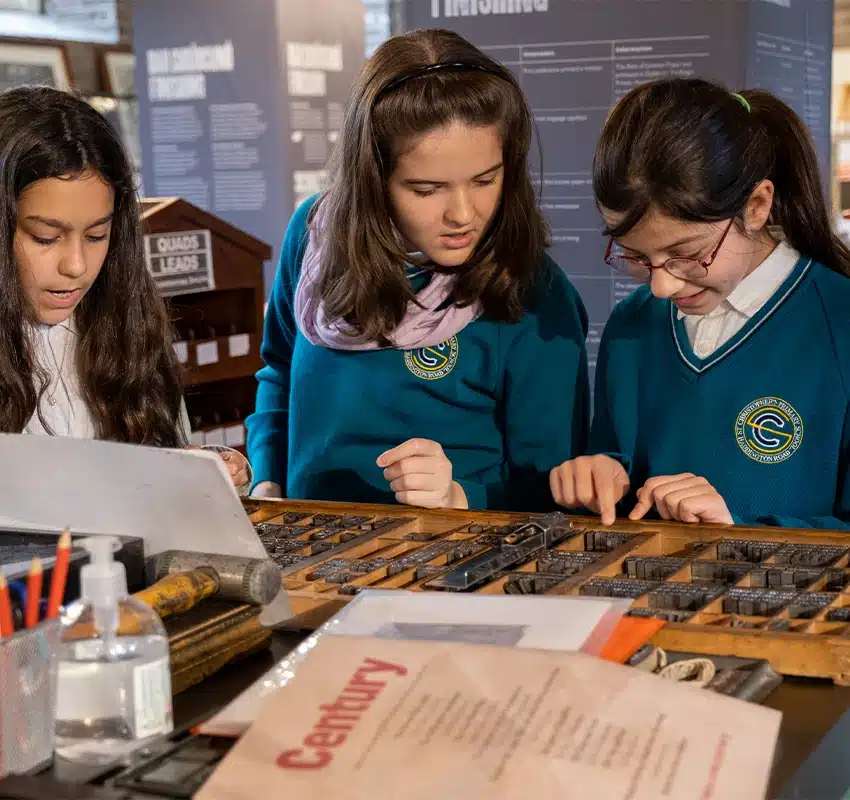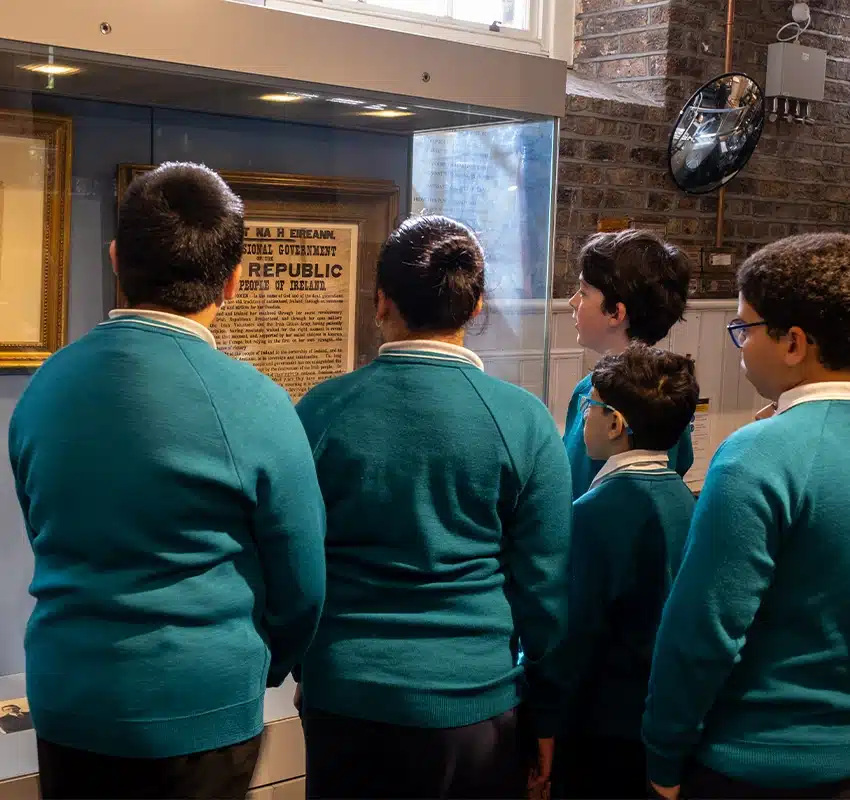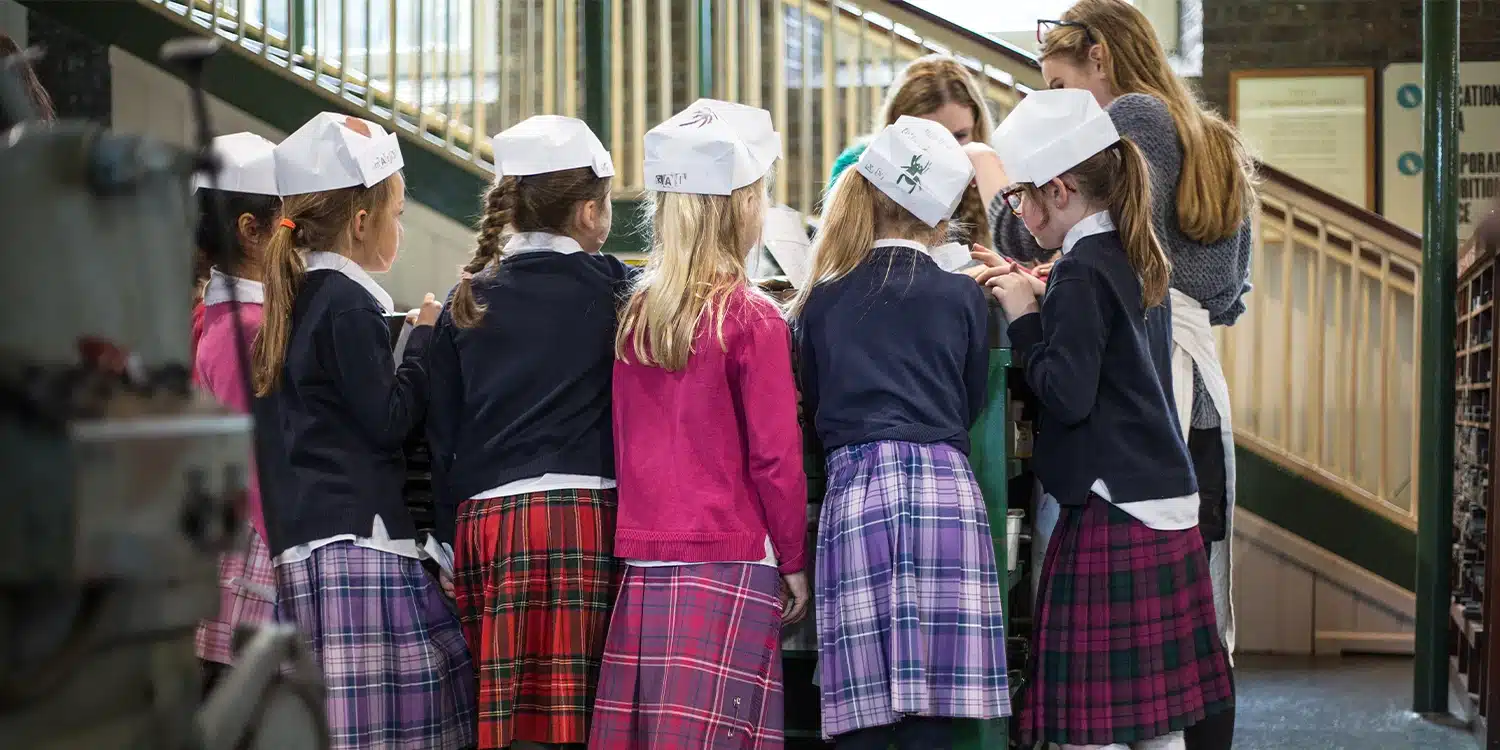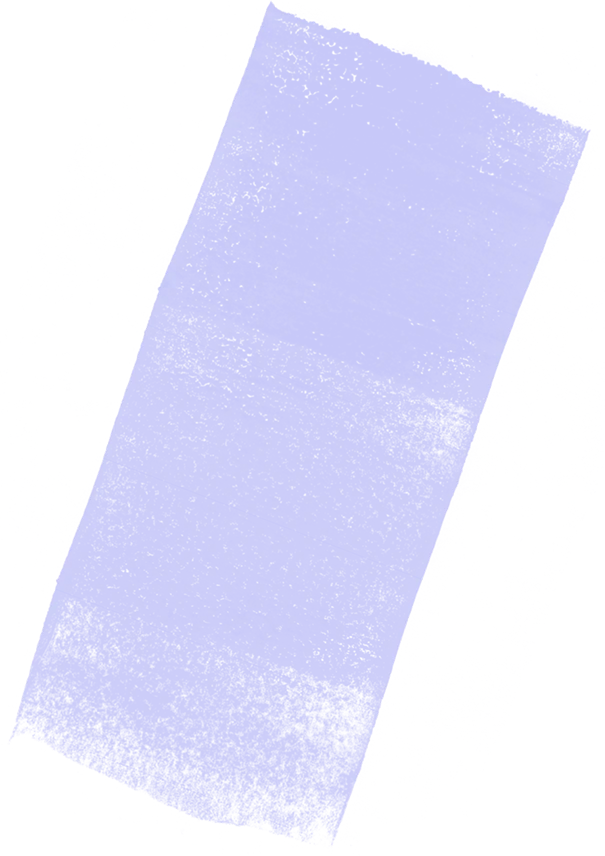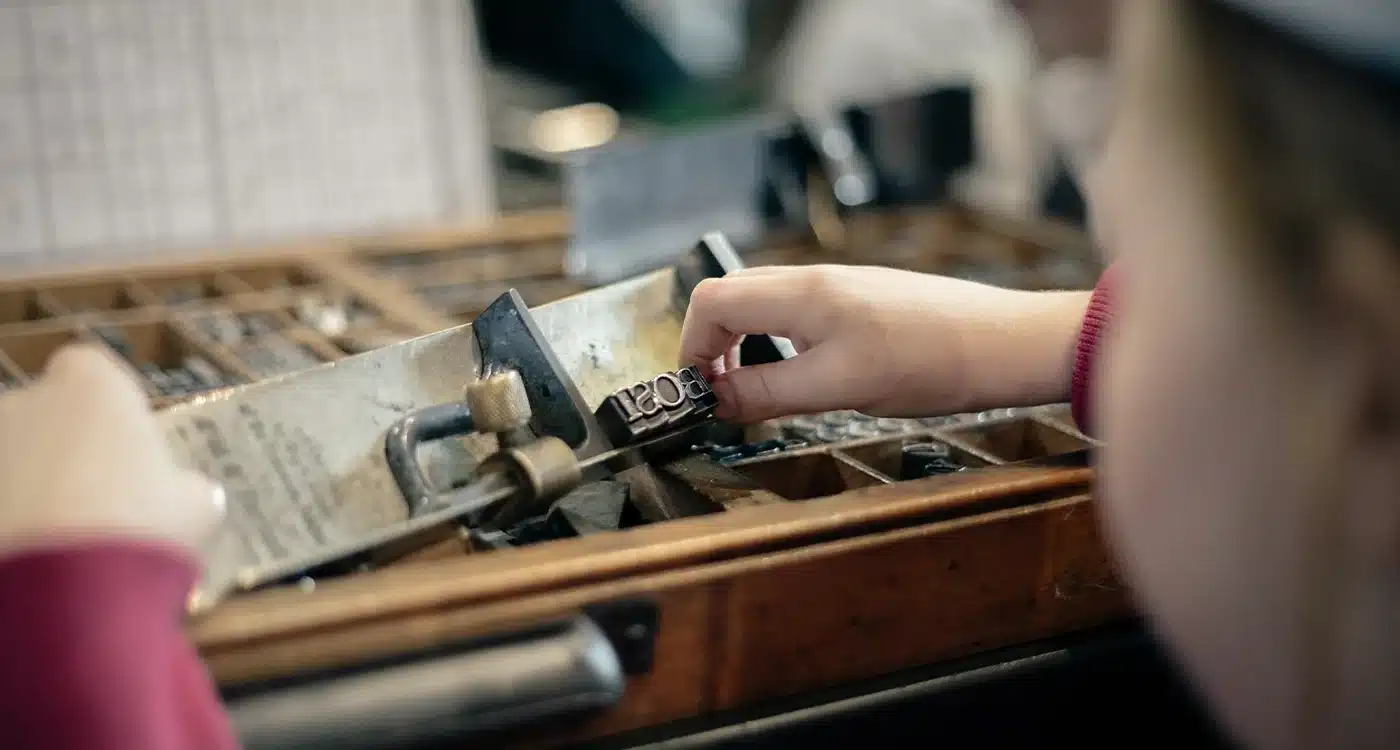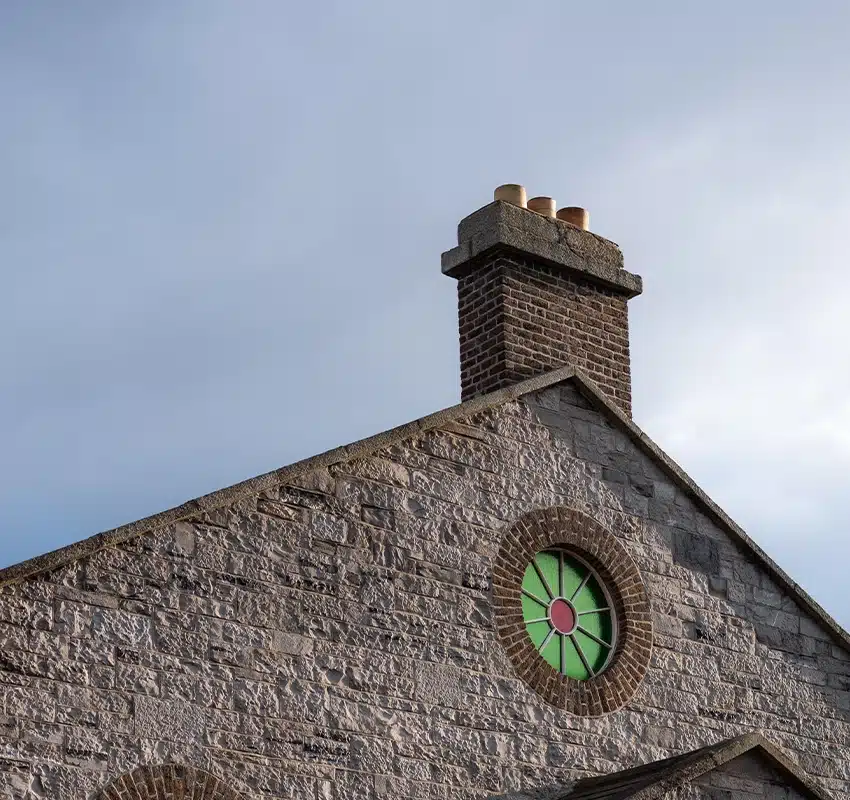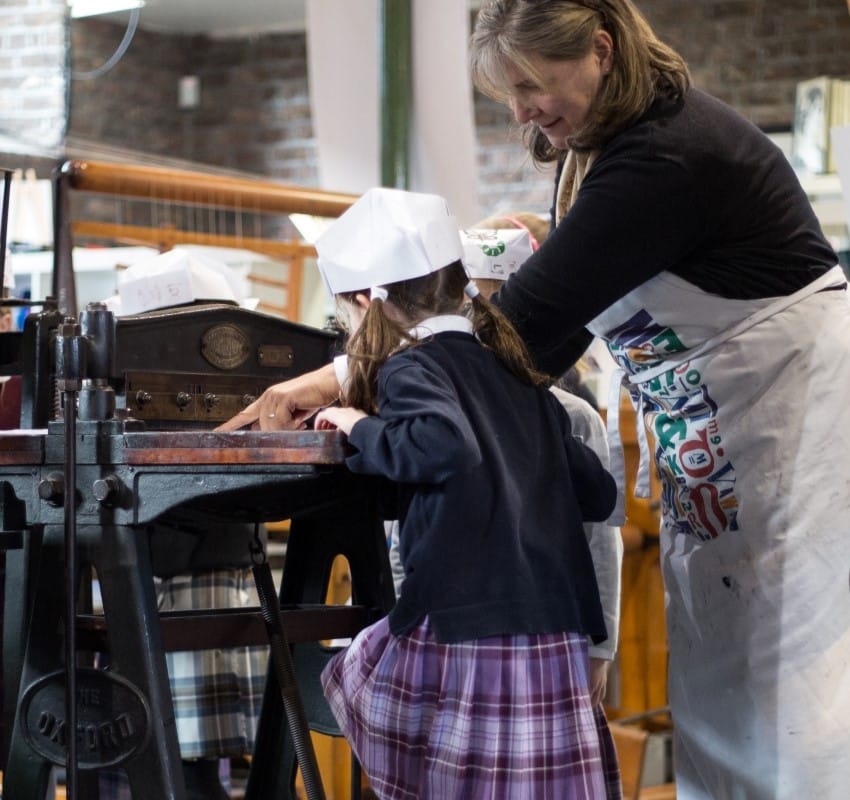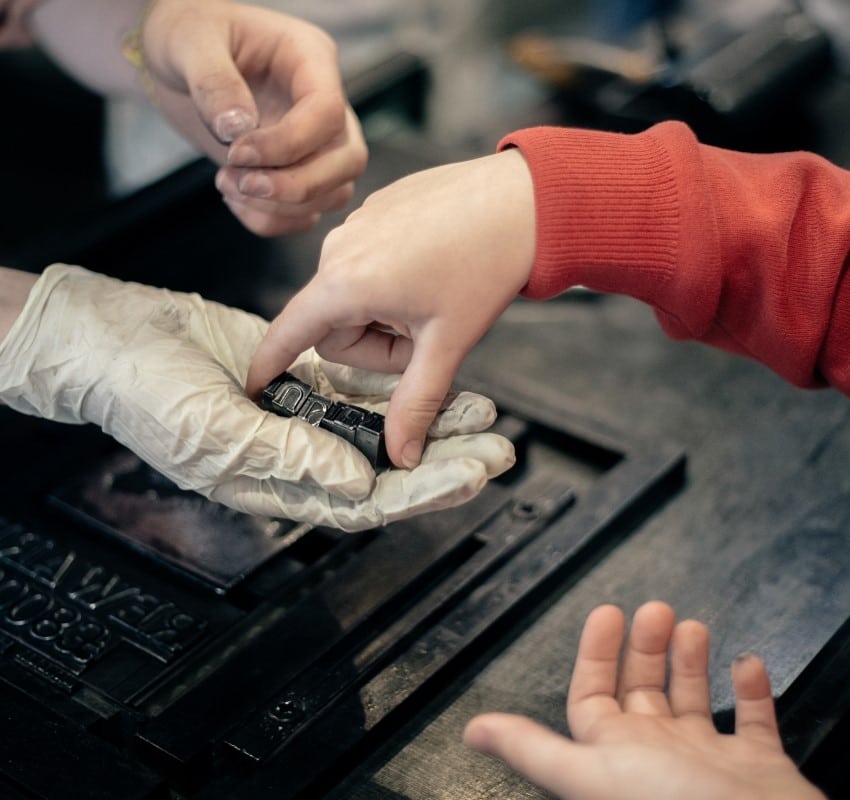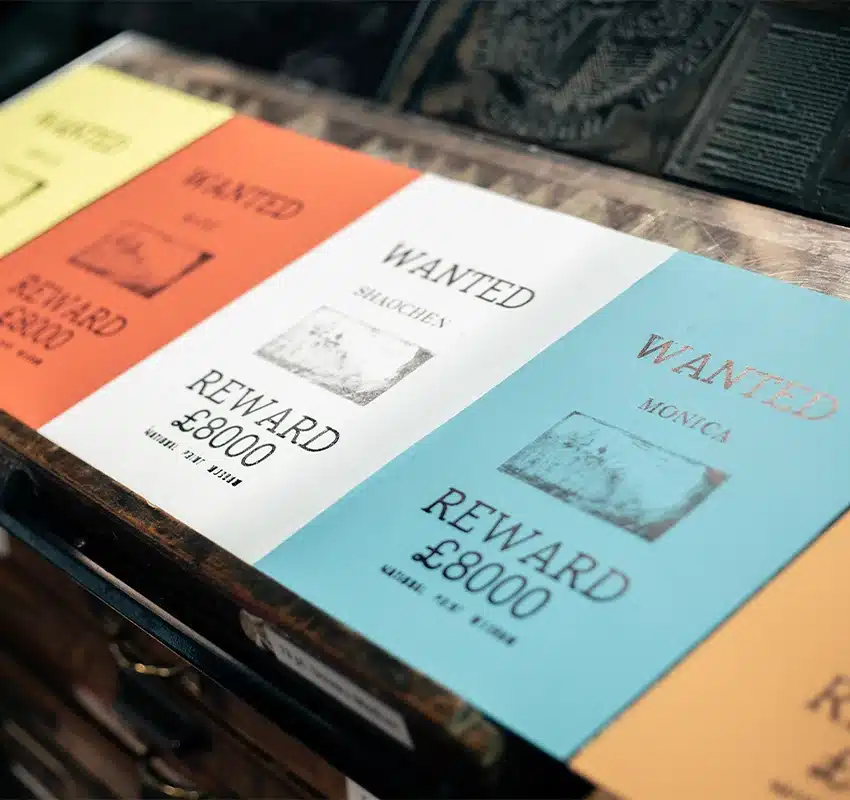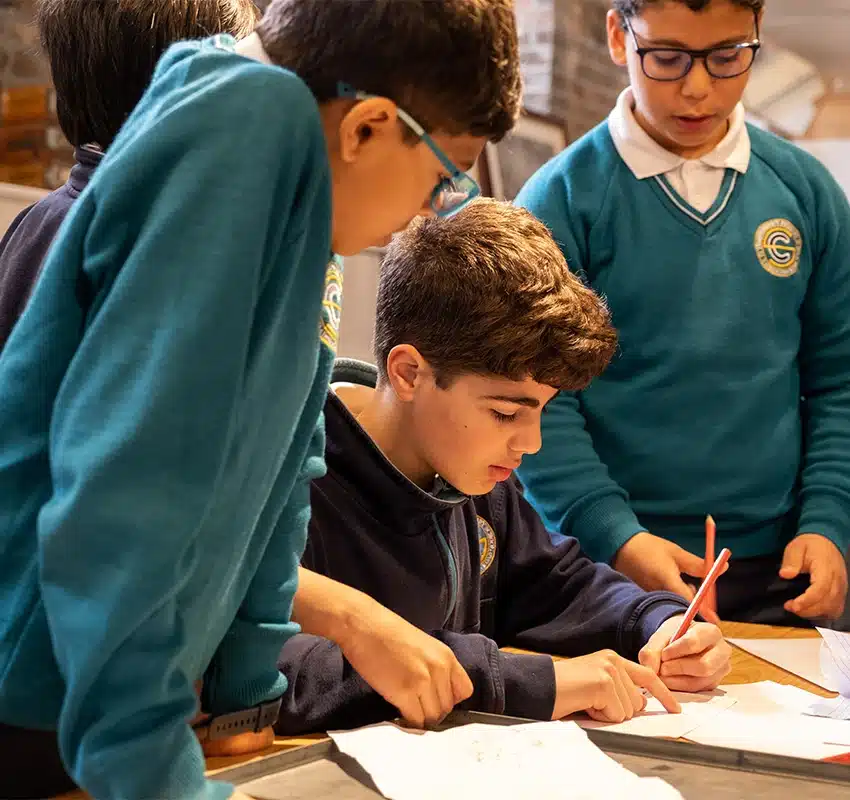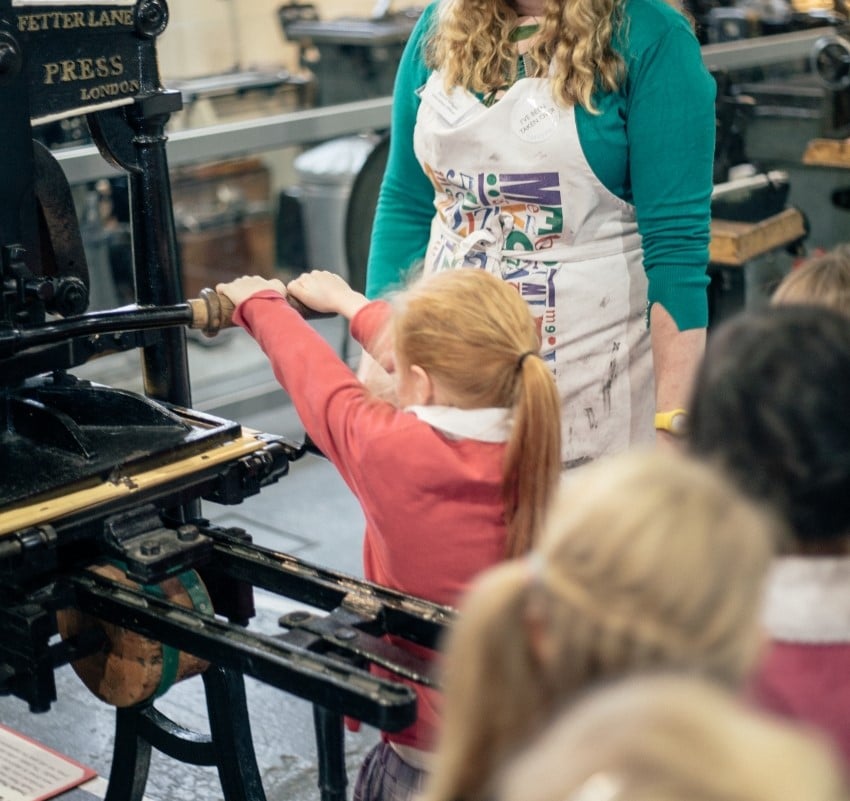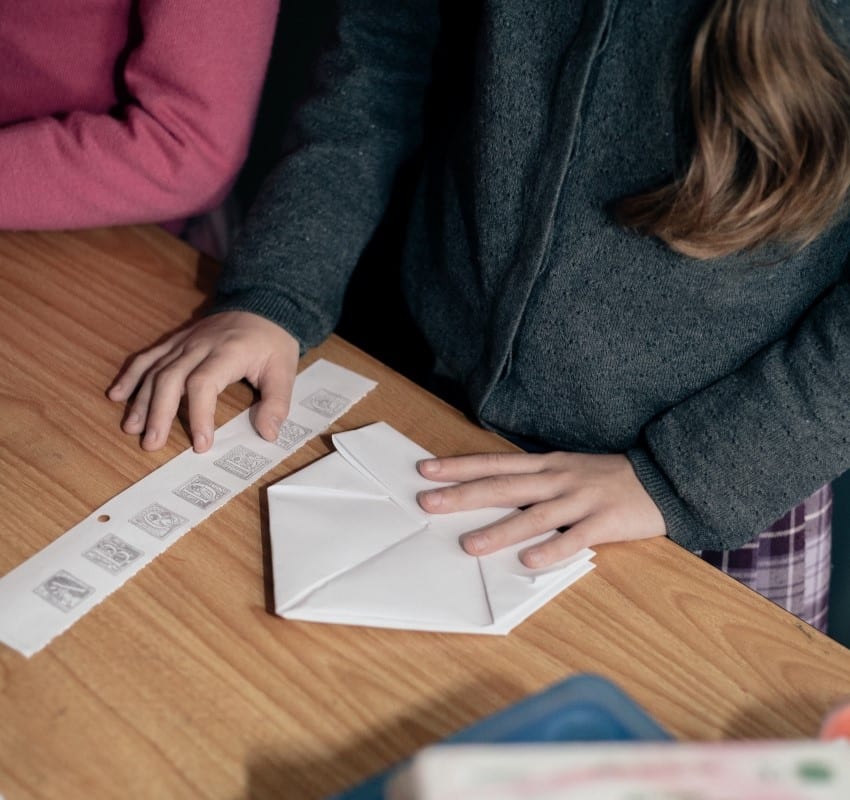Tour Structure and Learning Outcomes
The tour is cross-curricular in nature and interprets a number of strands within the Primary School History, Visual Arts, Science and English curriculum. There are three core Activities.
Activity 1: Tour of Printing Machines & Finishing Area: During this hands-on and engaging tour, children learn about a selection of the traditional printing machines in the Museum’s collection including the Wooden Press, Columbian Press, Wharfedale Stop-Cylinder Press and Platen Presses. Children view an original copy of the 1916 Proclamation and help their guide to explore and spot the printing errors throughout. The tour closes in the Finishing Area, where children are invited to interact with the traditional perforating and hole-punching machines.
Activity 2: Hand Composing & Poster Printing: During this activity, children learn about Johannes Gutenberg and his invention of movable type. They learn about aspects of the traditional composing of text for printing (the case-room, composing stick, movable type, uppercase and lower case, inking up, the proofing press etc.). Each child is then invited to hand-compose their names and insert them into a ‘forme’ in order to print their own ‘Wanted’ poster.
Activity 3: Printer’s Hat-making: A printer’s hat was one of the first things an apprentice printer learned to make. During this activity, children learn to make a similar hat using the traditional Japanese paper craft of origami. Once the hat is complete, children decorate and personalise their hat using wooden ink stampers.
